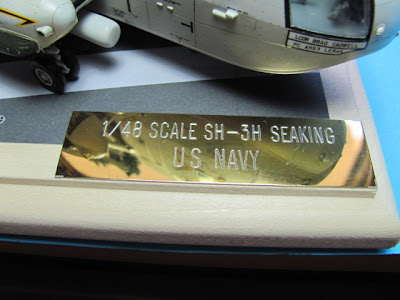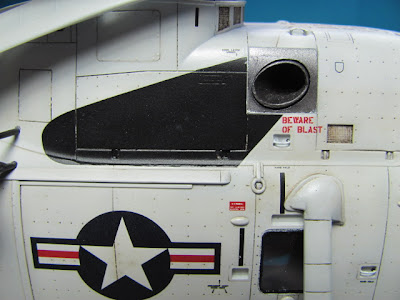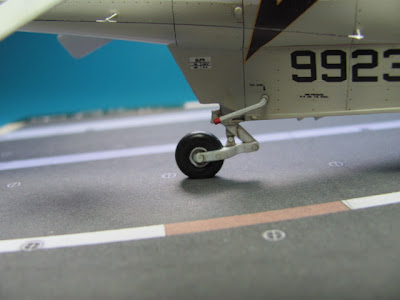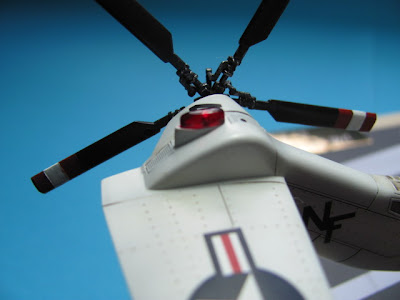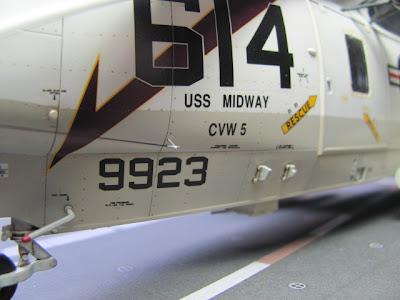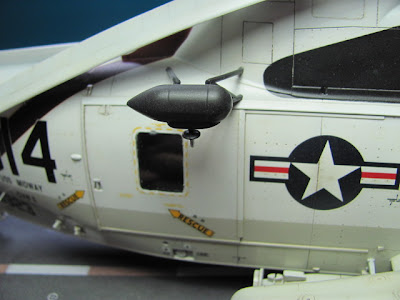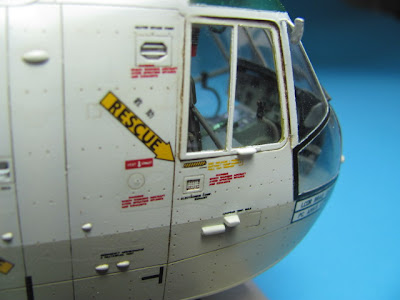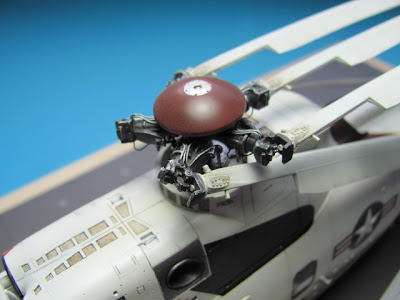This the A6-E Intruder from Kinetic. I just can't seem to get enough of US Navy aircraft can I? :)
It was a good build. However there a couple of fitting problems especially in the cockpit tub. It just wouldn't fit when the 2 fuselage halves were put together. I had to sand/shave/slice off certain parts of the tub to get it to fit. The ejection seats, when put in the cockpit, look a bit too low (based on reference photos), so I propped it up with some styrene glued underneath the seat.
The nose landing gear and strut didn't look as busy as the real one, so I added some wires to simulate hydraulic lines. There are also quite a number of mistakes in the instruction sheet. One of them I remember is that the instruction sheet tells you to put the fuel tanks under the outer wing pylon and the bombs (forgot what they're called) under the inner wing pylon. When I looked at the reference photos, it was the other way round (bombs on the outside). I'm not sure in real life if the positions can be swapped but I decided to follow with the real aircraft. So for you guys who plan to build this model, please do research and collect some reference photos and don't follow the instruction sheet blindly :)
On this model I used the same method as I did for the S3 Viking previously, that is to sand away and remove the seam line between the canopy (in this case the front canopy window) and the aircraft fuselage.
The surface detail was poor. I wasn't impressed with the panel lines. Most of the panel lines were too wide and shallow, which makes it hard to apply a wash. Other panel lines just stopped halfway. I decided to improve the appearance of the panel lines by rescribing everything. I did this by running the scribing tool along the existing panel with several passes, using more pressure with each pass, thereafter, using a 400 grit sanding film, I sanded on the surface around the panel lines. After several rounds of doing this, you'll realise that the panel line becomes deeper (because you're continually scribing) and narrower (because you're sanding the area around it). This will make it easier for the wash to flow afterwards.
Also, the tail of the model was completely void of any detail. So all panel lines were scribed from scratch with reference to photos of the real aircraft.
The panel lines for the leading edge slats were also rescribed as they were inaccurate.
Overall this was a tedious build as a lot of preparation needed to be done to the surface before any priming or painting could commence. I really wish the surface detail could be as good as Hasegawa or Tamiya. I also didn't feel that the shape of the aircraft looked like the real one. It seems to me that the real aircraft has a fatter and shorter nose (I could be wrong, A6 experts please comment). I would think the Revell A6 looked more like the real thing (but that one doesn't have recessed panel lines and a wing fold mechanism). A point to note is that the Kinetic A6 was released after the Prowler, and I suspect several of the parts could have been recycled as a cost saving move, and hence this could be the reason for some innacuracies.








































